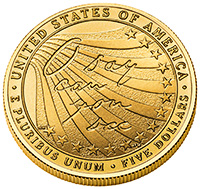The Star-Spangled Banner








On September 7, 1814, Francis Scott Key visited the British fleet in Maryland's Chesapeake Bay to secure the release of his friend Dr. William Beanes. The elderly physician had been taken prisoner when the British invaded Washington, setting fire to several government buildings, including the U.S. Capitol, White House and Treasury Department.
Beanes' release was secured, but he and Key were held by the British during the shelling of Fort McHenry, the principal fort defending Baltimore. On the morning of September 14, 1814, after the 25-hour British bombardment of Fort McHenry, Key peered through the clearing smoke to see a 42-foot by 30-foot American flag flying proudly over it.
He was so inspired by the sight of the enormous flag that he wrote a verse he named "The Defence of Fort McHenry" to commemorate the occasion. He also included a note that it should be sung to the tune of the popular British melody "To Anacreon in Heaven." Within a month, the words had been published in papers along the eastern seaboard. In 1916, President Woodrow Wilson ordered that the anthem, which had been popularly renamed the "The Star-Spangled Banner," be played at military and naval ceremonies. On March 3, 1931, President Herbert Hoover signed a resolution passed by Congress that officially designated "The Star-Spangled Banner" as the U.S. National Anthem.
Star-Spangled Banner Commemorative Coin Act
The Star-Spangled Banner Commemorative Coin Act (Public Law 111-232), signed into law on August 16, 2010, requires the Secretary of the Treasury to mint and issue up to 100,000 gold $5 coins and 500,000 silver $1 coins in commemoration of the bicentennial of the writing of our national anthem. According to the law, the designs shall be emblematic of the War of 1812, particularly the Battle of Baltimore that formed the basis for the lyrics of "The Star—Spangled Banner."
Surcharges collected from sales of the 2012 Star-Spangled Banner Commemorative Coins—$35 for each gold coin and $10 for each silver coin—are authorized to be paid to the Maryland War of 1812 Bicentennial Commission. The commission will use these funds to support its bicentennial activities, educational outreach, and preservation and improvement of the sites and structures related to the War of 1812.
Coin Designs
Gold Five-Dollar Coin
The obverse (heads side) design of the 2012 Star-Spangled Banner Commemorative Gold Five-Dollar Coin is emblematic of the theme "The Battles at Sea During the War of 1812." It depicts a naval battle scene from the War of 1812, with an American sailing ship in the foreground and a damaged and fleeing British ship in the background. Inscriptions are IN GOD WE TRUST, LIBERTY and 1812 — 2012.
The reverse (tails) design is emblematic of the theme "The Star-Spangled Banner" (the song). It depicts the first words of the Star-Spangled Banner anthem, O say can you see, in Francis Scott Key's handwriting against a backdrop of 15 stars and 15 stripes, representing the Star-Spangled Banner flag. Inscriptions are UNITED STATES OF AMERICA, E PLURIBUS UNUM and FIVE DOLLARS.
Silver Dollar
The obverse (heads side) design of the 2012 Star-Spangled Banner Commemorative Silver Dollar is emblematic of the theme "The Battle of Baltimore at Fort McHenry." It depicts Lady Liberty waving the 15-star, 15-stripe Star-Spangled Banner flag with Fort McHenry in the background. Inscriptions are LIBERTY, IN GOD WE TRUST and 2012.
The reverse (tails) design is emblematic of the theme "The Star-Spangled Banner" (the flag). It depicts a waving modern American flag. Inscriptions are ONE DOLLAR, E PLURIBUS UNUM and UNITED STATES OF AMERICA.
All four 2012 Star-Spangled Banner Commemorative Coin designs were approved by the Department of the Treasury on November 3, 2011, at the recommendation of the United States Mint, after consultation with the Maryland War of 1812 Bicentennial Commission and the U.S. Commission of Fine Arts, as well as review by the Citizens Coinage Advisory Committee.
Coin Specifications:
| Gold Five-Dollar Coin | |
|---|---|
| Weight: | 8.359 grams nominal |
| Diameter: | 0.850 inch (±0.003) or 21.59 mm (±0.08) |
| Composition: | 90 percent gold, 10 percent alloy |
| Mintage Limit: | 100,000 across all product options |
| Place struck: |
United States Mint at West Point ("W" mint mark) |
| Silver Dollar | |
| Weight: | 26.73 grams nominal |
| Diameter: | 1.500 inches (±0.003) or 38.10 mm (±0.08) |
| Composition: | 90 percent silver; 10 percent copper |
| Mintage Limit: | 500,000 across all product options |
| Place struck: | United States Mint at Philadelphia ("P" mint mark) |

